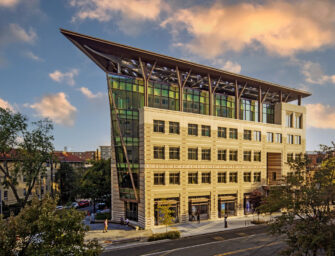Improving AGU’s Honors and Recognition Program
By Mary Anne Holmes, 2015-2016 Honors and Recognition Committee Member
In late May, I was able to participate in the AGU Honors and Recognition Committee’s (H&RC) annual spring meeting.
This committee is charged with oversight of all of the Union’s awards, medals, prizes and Fellows selection. Through member volunteers serving on selection committees for each honor, AGU confers 25Union-wide awards each year, 60 Section and Focus Group awards, and elects the class of Fellows.
The AGU staff provides us with detailed data for each award and for each selection committee: who serves on each committee and what their affiliations are; how many nominations were received for each award and how does that compare to the eligible AGU membership; who made the nominations; and so on.
From these data, we discovered that there is a rather small pool of nominators relative to the entire AGU membership. As a group, the committee wondered whether this is because the nomination process seems onerous or obscure . . . or both . . . or something else entirely. We understand that lack of time is a given for all of us, but time spent nominating colleagues for recognition is time well spent. The more nominators we have, the more members will be nominated and the more likely we are to reward the folks who deserve recognition for their scientific and outreach contributions.
One step that the H&RC has taken to encourage more AGU members to nominate colleagues is to increase transparency of the award process by asking each award, medal and prize committee to clarify the criteria by which candidates are selected. Simply stating “excellence in Field X” doesn’t give a nominator a lot of information on what should go into a nomination letter, or who to approach to write letters of support, or what the support letters should contain. To address this issue, the committees are now in the process of detailing what “excellence in Field X” means and outlining what they look for in a successful nomination packet.
Another factor that contributes to low numbers of nominators among professional societies in general is that we simply don’t notice that our colleagues are ready for nomination. Research demonstrates that we are particularly prone to overlook colleagues from under-represented groups, and in AGU that means our non-U.S. colleagues, colleagues of racial and ethnic groups that are under-represented in the geosciences, and women colleagues. We all carry implicit biases that affect who we consider for awards, promotion, and even hiring. There is a short chapter on implicit bias and how its impact can be minimized in a book just published by AGU: Women in the Geosciences: Practical, Positive Practices Toward Parity.
Clarifying evaluation criteria and learning about the impact of implicit bias are just two strategies that can help us ensure that AGU’s honors and recognition programs are robust and fair. We are also holding a workshop at the Fall Meeting on becoming a successful AGU awards nominator.
The announcement about this year’s class of honorees and fellows will be happening in the next few weeks, and nominations for 2016 are due soon after the Fall Meeting. It’s not too soon to start thinking about who in your network deserves a formal “Thank You!” from the community.




There are no comments
Add yours